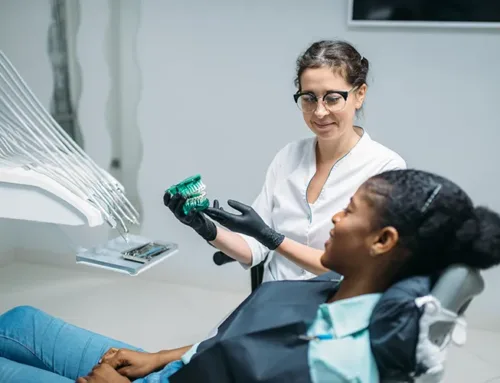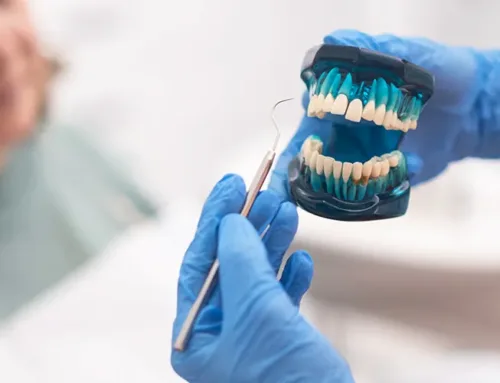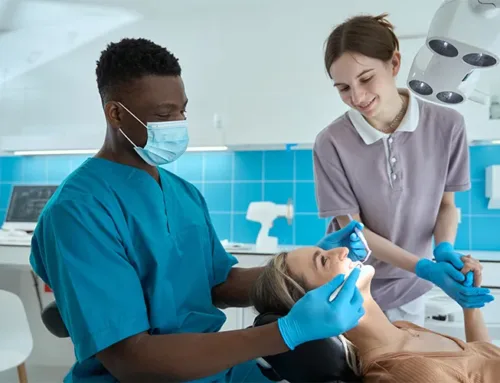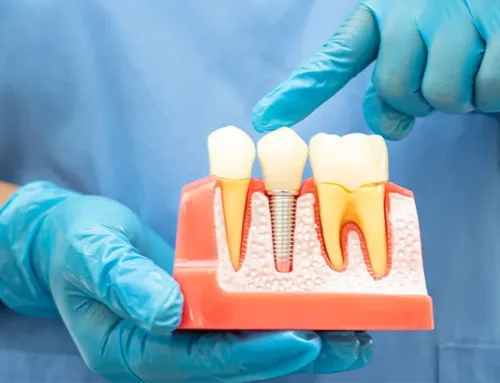Straight & Clear: The Ultimate Guide to Invisalign
November 23, 2020
Our smiles have a large impact on our lives. Being able to flash a nice, healthy smile with straight teeth not only helps us feel confident in ourselves, but it improves how others perceive us.
For those who hide their smiles because of crooked teeth, over or underbite problems, or an overcrowded mouth, the traditional solution is braces. But these are a hassle to deal with, may cause a great deal of pain, and fill your mouth with metal which many consider to be aesthetically unattractive.
This is where the Invisalign process becomes a better option, as it is nearly invisible, is removable, and is less painful.
Here is our ultimate guide to Invisalign.
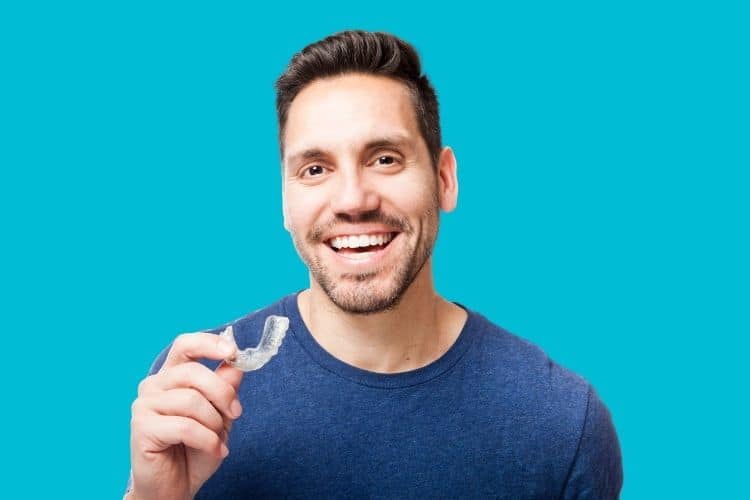
What Is Invisalign & How Does The Process Work?
The Invisalign teeth alignment system is a “clear brace” option that uses a set of clear, plastic aligners to gently straighten your teeth. Unlike the brackets and wiring of traditional braces, the Invisalign clear aligners can be removed and cleaned as needed, but are to be worn for up to 22-hours a day.
The aligners are made out of medical-grade plastic, are flexible, and are free of harmful industrial plastic chemicals like BPA and BPS. Each aligner is customized to fit your teeth and can be used to treat cross-bite, underbite, overbite, teeth crowding, and spacing issues.
Step One: A Digital Scan
To begin the Invisalign process, a digital scan of your mouth will be taken to ensure that you are a good candidate for the treatment. The digital scan is used to create an accurate model of your teeth and is painless to undergo. If you are a good candidate for treatment, your dentist will design a plan and provide you with a 3D image of what your teeth will look like at the end of the process.
There are no putty molds or impressions needed beyond the digital scan.
Step Two: First Aligner Fit Check
It may take a few weeks for your first aligner to be ready, as these are fabricated in a dental lab off-site. Once the aligner has arrived, your dentist will set up your next visit and make sure that the aligner fits properly and that you feel comfortable with it.
From here on out, all you need to do is wear the clear aligner for at least 22-hours a day, only removing it for periods of eating, drinking any non-water beverage, or as a personal preference for activities like photographs.
Step Three: The Aligner Series
The job of each aligner is to gently move your teeth by a fraction of a millimeter over the course of a two-week period. Once the two-week period is up, you must go back into the dentist’s office to swap out the aligner for the next one in the series. Most individuals require 18-30 clear aligners for the entire duration of the process, which usually takes about 12-18 months.
The length of the process depends on the complexity of your teeth, so you may have a longer or drastically shorter treatment span than 1-year.
How Is Invisalign Different From Traditional Braces?
With traditional braces, the metal brackets and wires are attached directly to the teeth and are adjusted in both thickness and tightness throughout the process. With Invisalign, the clear braces have a controlled amount of force applied to each tooth, reducing the amount of comfort that the individual experienced, as there is no need to tighten the brace.
Key differences between the two include:
- Invisalign has clear aligners, reducing feelings of self-consciousness.
- Invisalign’s aligners are removable.
- There are no food restrictions with Invisalign as they are removed during periods of eating.
- Invisalign is easily maintained, easily cleaned, and is more hygienic as food does not get stuck in the brace.
- Individuals can brush and floss their teeth as normal.
- In some cases, you may be given several aligners at once so that you do not have to visit the dental office to have your aligners swapped out.
Are There Downsides to Invisalign?
There are a few downsides with Invisalign, but these issues can generally be avoided with proper planning and mindfulness.
- If several Invisalign aligners are given out to the patient in a batch so that they do not have to come back to the dental office every two weeks, there is a higher risk that they will be lost. Custom-made aligners are expensive to replace.
- Individuals that skip days will have a prolonged treatment period.
- When eating in public, the aligners cannot withstand the action of chewing food and need to come out during periods of eating.
Is Invisalign Painful & Does It Impact Speech?
In the early stages of treatment, you may experience discomfort or sensitivity from the pressure that is being placed on your teeth. This may manifest as a dull ache, but it should disappear over a few days as your teeth begin to shift.
If there is an abnormal amount of tenderness, pain relief medication can be used. If the aligner ever rubs against your gums, dental wax can be provided to reduce friction.
There is a small speech adjustment period that an individual may need to go through when wearing the aligners for the first time. You may experience a slight audible lisp or have a hard time pronouncing “s” sounds clearly.
Over time, your cheeks and tongue will make the adjustments needed for clear speech. It is advised that if you are in a public-facing job, you practice speaking at home to quicken the speech adjustment period. Generally, speech issues are short-lived.
How Are The Clear Aligners Maintained?
The best way to maintain your aligners is to brush your teeth after eating so that no leftover food debris gets deposited into your aligner. This will prevent bacteria from growing on the aligner and staining it.
Other than this, you can clean your aligners out with a soft-bristled toothbrush and toothpaste, but only use warm water as hot water can warp the plastic.
Invisalign also has a lineup of cleaning products; the Invisalign Cleaning System, Invisalign Cleaning Crystals, or the Steraligner Cleaning Solution with Sterilizing Tray, but these are optional.
What Is The Cost of Invisalign?
The cost for Invisalign treatment is dependent on the complexity of your teeth, the length of the treatment required and will change based on what insurance covers. Invisalign does provide a month-by-month financial plan for patients so that the treatment can fit into every budget.
What Happens When The Treatment Has Finished?
You may need to go in for a few follow-up treatments so that your dentist can work out a plan to help you maintain your newly straightened teeth. You may be asked to wear a “finishing aligner” which is a clear, plastic retainer worn at night to prevent your teeth from shifting again.
Wearing one of these is not an indication that the treatment has been unsuccessful, but is the last aligner in the series before the permanent alignment is achieved. Not all patients have to wear finishing aligners.
Get started with Invisalign by scheduling an appointment with us. Contact us or give us a call at (813) 333-1922.




